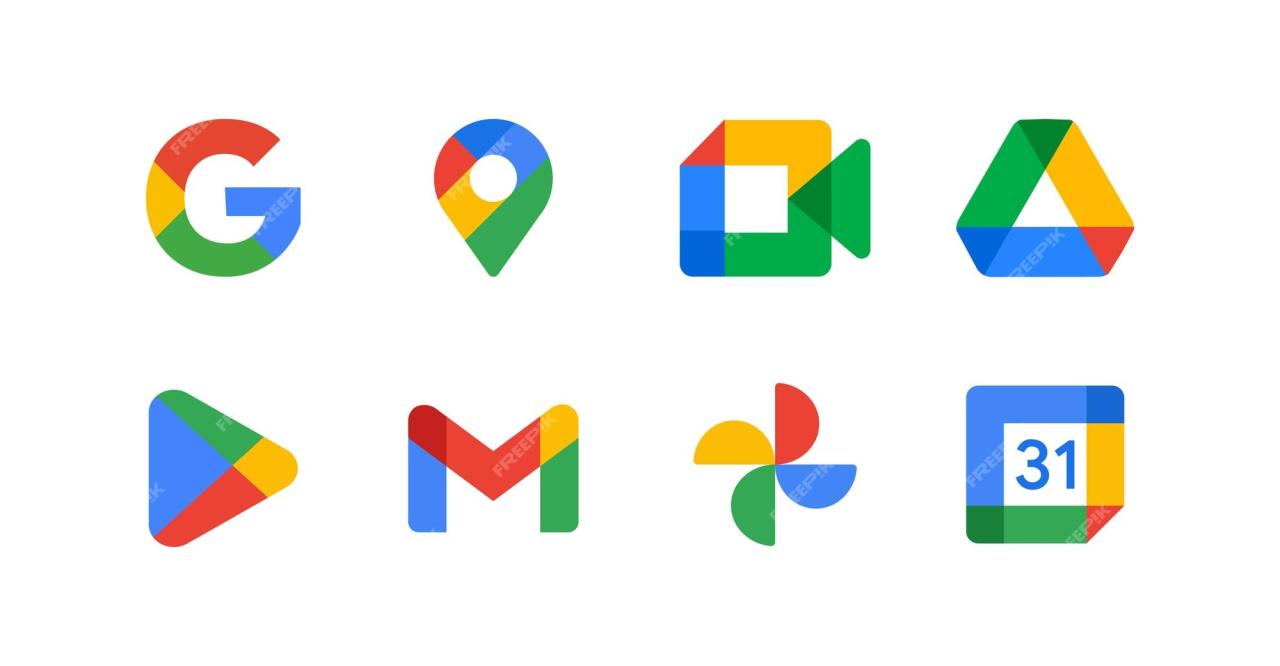google nest google home sets the stage for this enthralling narrative, offering readers a glimpse into a story that is rich in detail and brimming with innovation from the outset. These devices embody the essence of modern smart living, showcasing how they transform everyday routines into seamless experiences through advanced technology and user-friendly features. As we delve into the intricacies of the Google Nest and Google Home ecosystem, we discover the array of devices, their functionalities, and the powerful integration of Google Assistant that enhances our daily lives.
From setting up these devices to enjoying the myriad benefits they provide, this exploration will illuminate the ways in which Google Nest and Google Home not only simplify our routines but also elevate our homes into connected environments.
Overview of Google Nest and Google Home

Google Nest represents a significant evolution in smart home technology, integrating seamlessly with Google Home to create a cohesive ecosystem for managing daily tasks. With an emphasis on sustainability and user-friendly design, Google Nest products enhance home automation and connectivity. The transition from Google Home to Google Nest signifies a shift towards not just smart speakers, but a broader spectrum of devices that contribute to a connected living environment.
The primary distinction between Google Nest and Google Home lies in the expanded functionality and variety of devices under the Nest brand. While Google Home initially focused on smart speakers equipped with Google Assistant, Google Nest encompasses a comprehensive range of smart home devices designed for security, climate control, and energy management.
Features of Google Nest
Google Nest includes a variety of features that enhance home automation and user experience. Key features include:
- Smart Speaker Integration: Google Nest speakers provide high-quality audio playback and voice commands through Google Assistant.
- Smart Displays: Devices like the Nest Hub and Nest Hub Max offer visual interactions, displaying photos, providing recipes, or streaming videos.
- Home Security: Nest Cam and Nest Hello doorbells deliver advanced security features, including 24/7 live streaming and person alerts.
- Climate Control: Nest Thermostats learn user preferences to optimize heating and cooling, helping to save energy and reduce costs.
- Smart Lighting and Appliances: Through integrations with various smart lights and appliances, Nest devices can control home ambiance and functionality seamlessly.
Google Nest Devices
The Google Nest brand encompasses several devices aimed at providing a complete smart home experience. These devices include:
- Google Nest Hub: A smart display that serves as a control center for smart home devices, showcasing photos and supporting video calls.
- Google Nest Hub Max: A larger version with enhanced speakers and a camera for video calls, combined with smart features for home security.
- Google Nest Mini: A compact smart speaker that provides rich sound quality and voice control in a small form factor.
- Google Nest Audio: A more powerful smart speaker focused on sound quality, delivering immersive audio experiences.
- Google Nest Thermostat: A smart thermostat that learns your schedule and can be controlled remotely through the Google Home app.
- Google Nest Cam: Indoor and outdoor security cameras that provide real-time video streaming and alerts to ensure home safety.
- Google Nest Doorbell: A smart doorbell that alerts users to visitors and packages, offering a clear view of who is at the door.
Integration of Google Assistant
Google Assistant is the backbone of the Google Nest ecosystem, providing voice-activated control and advanced functionality across all devices. This integration allows users to:
- Control Devices: Users can issue voice commands to control compatible smart home devices, such as lights, locks, and thermostats, creating a hands-free experience.
- Personalized Experience: Google Assistant learns user preferences over time, allowing for customized responses and recommendations based on past interactions.
- Automation Routines: Users can set up routines that trigger multiple actions with a single command, enhancing convenience and efficiency in daily tasks.
- Access Information: Google Assistant provides real-time information, such as weather updates, news briefs, and answers to general queries, facilitating easy access to knowledge.
Setting Up Google Nest and Google Home

Setting up your Google Nest or Google Home device can open up a world of convenience and efficiency in managing your smart home. Whether you’re a tech enthusiast or a novice, the setup process is designed to be user-friendly, allowing you to get started with minimal hassle.
To begin, ensure you have all necessary items and information at your disposal. This preparation will streamline the setup process, helping you to connect your device quickly and efficiently.
Prerequisites for Setup
Before starting the installation of your Google Nest or Google Home, it’s essential to have the following items and details ready. This checklist will ensure that your setup goes smoothly without any interruptions.
- Google Nest or Google Home device
- Smartphone or tablet with the Google Home app installed (available on iOS and Android)
- Stable Wi-Fi network (2.4 GHz or 5 GHz) with the password readily available
- Google account to link your device
- Location information to enable services like weather and local news
- Optional: Compatible smart devices (such as lights, plugs, or thermostats) to connect with your Google Nest
Step-by-Step Setup Process
The setup process for your Google Nest or Google Home device is straightforward. Follow these steps to get your device up and running, allowing you to access voice commands and automation features quickly.
1. Plug in your device: Find a power outlet and connect your Google Nest or Google Home device using the included power cable. Wait for the device to power on; it will typically start with an introductory sound.
2. Install the Google Home app: On your smartphone or tablet, ensure you have the Google Home app installed. Open the app, and make sure you are logged into your Google account.
3. Add your device: In the Google Home app, tap on the ‘+’ icon (usually at the top left), then select ‘Set up device’ followed by ‘New devices’. The app will prompt you to choose your home if you have multiple locations set up.
4. Connect to your Wi-Fi: The app will search for nearby devices. Once your Google Nest or Google Home appears, select it. Follow the on-screen instructions to connect to your Wi-Fi network. You may need to enter your Wi-Fi password at this step.
5. Choose device preferences: After connecting to Wi-Fi, the app may ask you to customize preferences, such as language, location, and voice recognition settings. These options enhance the functionality of your device.
6. Link smart devices: If you have other smart devices, like lights or thermostats, you can link them now. The app will guide you through selecting compatible devices and linking them to your Google Nest or Google Home.
7. Complete setup: Once all steps are finished, the app will indicate that your device is set up. You can now start using voice commands to control your smart home, access information, and enjoy the connected experience.
“Having your Google Nest or Google Home set up correctly is crucial for maximizing its potential as a smart home hub.”
Connecting Google Nest to Home Wi-Fi and Smart Devices
Establishing a connection between your Google Nest and home Wi-Fi is a fundamental part of the setup. This connection allows the device to access the internet, enabling various functionalities, including streaming music, controlling smart devices, and providing updates on weather and news.
To connect your Google Nest to Wi-Fi, follow these detailed guidelines:
– During the setup process in the Google Home app, select your preferred Wi-Fi network when prompted.
– Ensure that your device is within range of the Wi-Fi router to avoid connectivity issues.
– Remember to check for network compatibility; your router should support either 2.4 GHz or 5 GHz bands.
For connecting Google Nest to your smart devices:
– Use the ‘Works with Google’ feature in the Google Home app to find compatible smart home devices.
– Sign in to the associated accounts for your smart devices when prompted by the app. This step is essential for enabling control via your Google Nest.
– Test the connection by using voice commands to control the linked devices (e.g., “Hey Google, turn on the living room lights”).
Having completed these connections, you will be ready to enjoy the myriad benefits that come with a smart home experience powered by Google Nest and Google Home.
Benefits of Using Google Nest and Google Home: Google Nest Google Home
The integration of Google Nest and Google Home into daily life represents a significant shift towards smarter home automation. These devices not only enhance convenience but also contribute to energy efficiency and improved lifestyle management. Understanding the benefits of these smart devices can help users fully leverage their capabilities for a more streamlined living experience.
Advantages of Smart Home Automation
Smart home automation simplifies everyday tasks through seamless connectivity and control of various devices. Google Nest serves as a central hub, allowing users to manage their home environment efficiently. Key advantages include:
- Remote Access: Control your home devices from anywhere using the Google Home app, providing peace of mind when away.
- Integration: Google Nest connects with a wide range of smart home devices, including lights, security cameras, and thermostats, allowing for unified management.
- Automation: Schedule routines that automate tasks, such as adjusting temperature or lighting, to create a more comfortable environment without manual intervention.
Enhancing Daily Life Through Routines and Voice Control, Google nest google home
Google Home significantly enhances daily life by enabling users to create personalized routines and utilize voice commands for convenience. These features include:
- Custom Routines: Set up morning and evening routines with a single command that can turn on lights, read the news, and adjust the thermostat.
- Voice Activation: Use simple voice commands to control devices, play music, set reminders, and access information hands-free, making multitasking easier.
- Family Management: Create shared family calendars and reminders that can be accessed by all household members through voice prompts, enhancing communication and organization.
Energy-Saving Features of Google Nest Devices
One of the standout benefits of Google Nest devices is their ability to contribute to energy savings. These features help users reduce their energy consumption while maintaining comfort:
- Smart Thermostats: Google Nest learning thermostats adjust automatically based on user habits, optimizing heating and cooling schedules to save energy.
- Energy Reports: Users receive monthly energy reports that provide insights into consumption patterns, helping them make informed decisions on energy use.
- Home/Away Assist: This feature detects when no one is home and adjusts the thermostat accordingly, preventing unnecessary energy expenditure.
Troubleshooting Common Issues with Google Nest and Google Home

For users of Google Nest and Google Home, occasional issues may arise that can disrupt the smooth operation of these smart devices. Understanding common problems and their solutions can enhance user experience and ensure effective functionality. Below, we explore frequent challenges faced by users and provide practical advice on resolving them.
Common Problems with Google Nest
Many users report specific issues with Google Nest devices that may stem from setup, connectivity, or functionality. Addressing these common problems is crucial for maintaining a seamless smart home experience. Here are some frequently encountered issues along with their respective solutions:
- Device Not Responding: Ensure the device is plugged in and powered on. Restarting the device often resolves this issue.
- Inaccurate Voice Recognition: Check that the device is not obstructed and is within range. You may need to retrain voice recognition by going into the Google Home app settings.
- Wi-Fi Connectivity Problems: Verify that the Wi-Fi network is functioning correctly. If necessary, reconnect the device to the Wi-Fi network through the Google Home app.
- Software Update Issues: Regularly check for updates in the Google Home app. If updates fail, a restart of the device may help initiate the update process.
- Difficulty Streaming Music or Content: Ensure that the streaming service is set up correctly in the Google Home app, and check your internet connection for stability.
Troubleshooting Connectivity Issues with Google Home
Connectivity issues can significantly impact the usability of Google Home devices. When experiencing problems, follow these structured troubleshooting steps to restore connectivity:
1. Check Internet Connection: Verify that your Wi-Fi network is operational by testing it with other devices. If the internet is down, troubleshoot your router or contact your internet service provider.
2. Restart Google Home Device: Unplug the device, wait for about 10 seconds, and plug it back in. This can often resolve temporary connectivity glitches.
3. Reboot Router: Restarting your Wi-Fi router can help clear any network issues that may be affecting device connectivity.
4. Forget and Reconnect to Wi-Fi: Use the Google Home app to forget the current Wi-Fi network and then reconnect. This is done by accessing device settings in the app.
5. Update Google Home App: Ensure that you have the latest version of the Google Home app, as updates may fix bugs related to connectivity.
Resetting and Reconfiguring Google Nest Devices
If problems persist, a factory reset of the Google Nest device may be necessary. This will erase all settings and allow you to start fresh. Here’s how to effectively reset and reconfigure your devices:
- Factory Reset Procedure: Locate the reset button on the device, which is often found at the base. Press and hold the button for about 15 seconds until the device lights start flashing.
- Reconfigure Device: After resetting, open the Google Home app and follow the setup instructions. Make sure to have your Wi-Fi password handy for a smooth connection process.
- Linking Accounts: Ensure that all necessary accounts (like music streaming services) are re-linked after the reset to restore full functionality.
- Testing Device Functionality: After reconfiguration, test the device by issuing voice commands to confirm that it responds accurately.
“Performing a reset can often resolve persistent issues and restore your Google Nest device to optimal performance.”
Expert Answers
What is the difference between Google Nest and Google Home?
Google Nest encompasses a range of smart home products, while Google Home specifically refers to the voice-activated speakers. Nest devices focus on home security and automation.
Can I connect Google Nest to my existing smart devices?
Yes, Google Nest can integrate seamlessly with a wide variety of smart devices, allowing for centralized control through the Google Assistant.
How do I reset my Google Nest device?
To reset, locate the reset button on the device and press it for about 10 seconds until the device’s lights indicate that it is resetting.
Is Google Assistant on Google Home always listening?
Yes, Google Assistant is always listening for the wake word, “Hey Google,” but you can mute the microphone for privacy.
What are the energy-saving features of Google Nest devices?
Google Nest devices include features like energy usage reports and smart scheduling to optimize heating and cooling based on actual usage patterns.
In today’s tech-savvy world, a reliable smart home sensor can significantly enhance your living experience. These devices not only provide security but also automate various functions within your home, making life more convenient. With the right sensors, you can monitor your home from anywhere, ensuring peace of mind while you’re on the go.
If you’re in the market for a sleek smartphone, the Galaxy S6 Edge stands out with its stunning curved display and powerful performance. This device combines elegance with functionality, offering a user-friendly interface and impressive camera capabilities, perfect for capturing every moment in style.